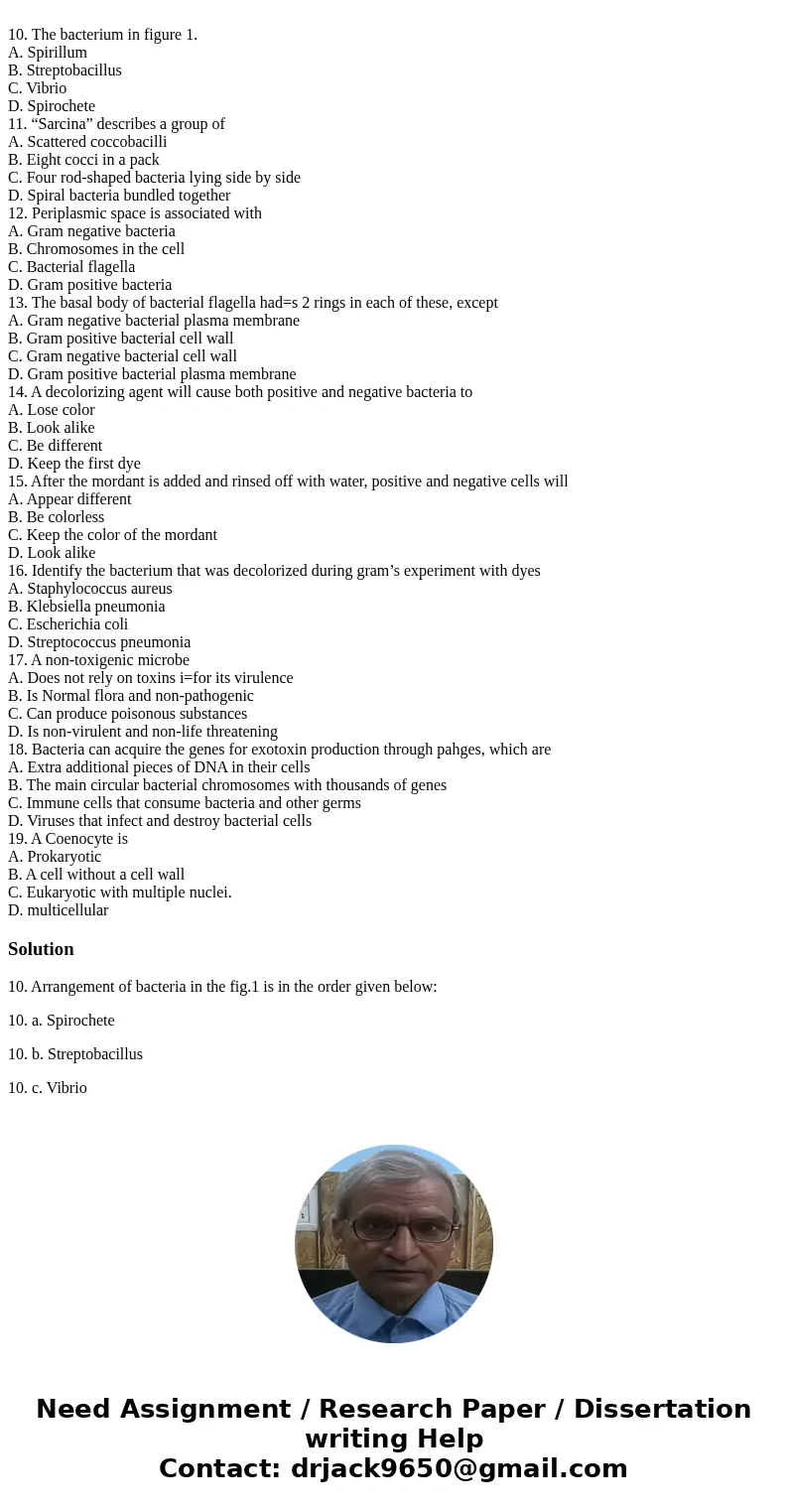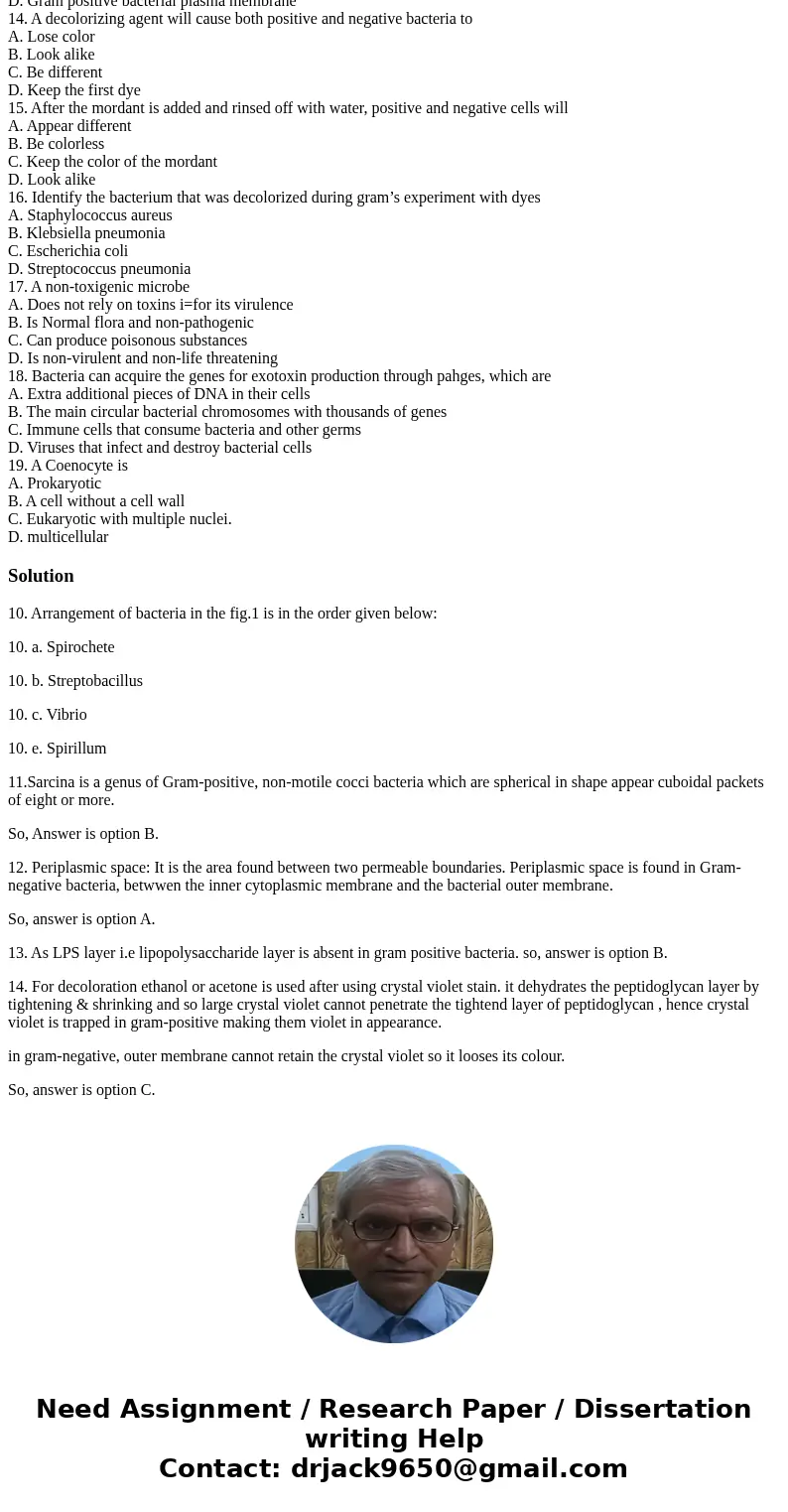10 The bacterium in figure 1 A Spirillum B Streptobacillus C
10. The bacterium in figure 1.
A. Spirillum
B. Streptobacillus
C. Vibrio
D. Spirochete
11. “Sarcina” describes a group of
A. Scattered coccobacilli
B. Eight cocci in a pack
C. Four rod-shaped bacteria lying side by side
D. Spiral bacteria bundled together
12. Periplasmic space is associated with
A. Gram negative bacteria
B. Chromosomes in the cell
C. Bacterial flagella
D. Gram positive bacteria
13. The basal body of bacterial flagella had=s 2 rings in each of these, except
A. Gram negative bacterial plasma membrane
B. Gram positive bacterial cell wall
C. Gram negative bacterial cell wall
D. Gram positive bacterial plasma membrane
14. A decolorizing agent will cause both positive and negative bacteria to
A. Lose color
B. Look alike
C. Be different
D. Keep the first dye
15. After the mordant is added and rinsed off with water, positive and negative cells will
A. Appear different
B. Be colorless
C. Keep the color of the mordant
D. Look alike
16. Identify the bacterium that was decolorized during gram’s experiment with dyes
A. Staphylococcus aureus
B. Klebsiella pneumonia
C. Escherichia coli
D. Streptococcus pneumonia
17. A non-toxigenic microbe
A. Does not rely on toxins i=for its virulence
B. Is Normal flora and non-pathogenic
C. Can produce poisonous substances
D. Is non-virulent and non-life threatening
18. Bacteria can acquire the genes for exotoxin production through pahges, which are
A. Extra additional pieces of DNA in their cells
B. The main circular bacterial chromosomes with thousands of genes
C. Immune cells that consume bacteria and other germs
D. Viruses that infect and destroy bacterial cells
19. A Coenocyte is
A. Prokaryotic
B. A cell without a cell wall
C. Eukaryotic with multiple nuclei.
D. multicellular
Solution
10. Arrangement of bacteria in the fig.1 is in the order given below:
10. a. Spirochete
10. b. Streptobacillus
10. c. Vibrio
10. e. Spirillum
11.Sarcina is a genus of Gram-positive, non-motile cocci bacteria which are spherical in shape appear cuboidal packets of eight or more.
So, Answer is option B.
12. Periplasmic space: It is the area found between two permeable boundaries. Periplasmic space is found in Gram-negative bacteria, betwwen the inner cytoplasmic membrane and the bacterial outer membrane.
So, answer is option A.
13. As LPS layer i.e lipopolysaccharide layer is absent in gram positive bacteria. so, answer is option B.
14. For decoloration ethanol or acetone is used after using crystal violet stain. it dehydrates the peptidoglycan layer by tightening & shrinking and so large crystal violet cannot penetrate the tightend layer of peptidoglycan , hence crystal violet is trapped in gram-positive making them violet in appearance.
in gram-negative, outer membrane cannot retain the crystal violet so it looses its colour.
So, answer is option C.


 Homework Sourse
Homework Sourse